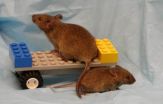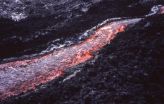(Press-News.org) Accidental awareness is one of the most feared complications of general anaesthesia for both patients and anaesthetists. Patients report this failure of general anaesthesia in approximately 1 in every 19,000 cases, according to a report published in Anaesthesia. Known as accidental awareness during general anaesthesia (AAGA), it occurs when general anaesthesia is intended but the patient remains conscious. This incidence of patient reports of awareness is much lower than previous estimates of awareness, which were as high as 1 in 600.
The findings come from the largest ever study of awareness, the 5th National Audit Project (NAP5), which has been conducted over the last three years by the Royal College of Anaesthetists (RCoA) and the Association of Anaesthetists of Great Britain and Ireland (AAGBI). The researchers studied 3 million general anaesthetics from every public hospital in UK and Ireland, and studied more than 300 new reports of awareness.
The extensive study showed that the majority of episodes of awareness are short-lived, occur before surgery starts or after it finishes, and do not always cause concern to patients. Despite this, 51% of episodes led to distress and 41% to longer-term psychological harm. Sensations experienced included tugging, stitching, pain, paralysis and choking. Patients described feelings of dissociation, panic, extreme fear, suffocation and even dying. Longer-term psychological harm often included features of post-traumatic stress disorder.
Sandra described her feelings when, as a 12-year-old, she suffered an episode of AAGA during a routine orthodontic operation:
"Suddenly, I knew something had gone wrong," said Sandra, "I could hear voices around me, and I realised with horror that I had woken up in the middle of the operation, but couldn't move a muscle... while they fiddled, I frantically tried to decide whether I was about to die."
For many years after the operation Sandra described experiencing nightmares in which, "a Dr Who style monster leapt on me and paralysed me." Sandra experienced the nightmares for more than 15 years until she realised the link: "I suddenly made the connection with feeling paralysed during the operation; after that I was freed of the nightmare and finally liberated from the more stressful aspects of the event."
Sandra's account is borne out by the research findings that longer-term adverse effects are closely linked with patients experiencing a sensation of paralysis during their awareness. The use of drugs to stop muscles working (muscle relaxants), often needed for safe surgery, is responsible. Distress at the time of the experience appears to be key in the development of later psychological symptoms.
Professor Jaideep Pandit, Consultant Anaesthetist in Oxford and Project Lead, explained: "NAP5 is patient focussed, dealing as it does entirely with patient reports of AAGA. Risk factors were complex and varied, and included those related to drug type, patient characteristics and organisational variables. We found that patients are at higher risk of experiencing AAGA during caesarean section and cardiothoracic surgery, if they are obese or when there is difficulty managing the airway at the start of anaesthesia. The use of some emergency drugs heightens risk, as does the use of certain anaesthetic techniques. However, the most compelling risk factor is the use of muscle relaxants, which prevent the patient moving. Significantly, the study data also suggest that although brain monitors designed to reduce the risk of awareness have a role with certain types of anaesthetic, the study provides little support for their widespread use."
Professor Tim Cook, Consultant Anaesthetist in Bath and co-author of the report, commented: "NAP5 has studied outcomes from all anaesthetics in five countries for a full year, making it a uniquely large and broad project. It is reassuring that the reports of awareness (1 in 19,000) in NAP5 are a lot rarer than incidences in previous studies. The project dramatically increases our understanding of anaesthetic awareness and highlights the range and complexity of patient experiences. NAP5, as the biggest ever study of this complication, has been able to define the nature of the problem and those factors that contribute to it more clearly than ever before. As well as adding to the understanding of the condition, we have also recommended changes in practice to minimise the incidence of awareness and, when it occurs, to ensure that it is recognised and managed in such a way as to mitigate longer-term effects on patients."
The project report includes clear recommendations for changes in clinical practice. Two main recommendations are the introduction of a simple anaesthesia checklist to be performed at the start of every operation, and the introduction of an Awareness Support Pathway - a structured approach to the management of patients reporting awareness. These two interventions are designed to decrease errors causing awareness and to minimise the psychological consequences when it occurs.
It is anticipated that NAP5 will lead to changes in the practice of individual anaesthetists, their training and hospital support systems both nationally and internationally.
INFORMATION:
Full details of the report can be found at http://nap5.org.uk/NAP5report
Largest ever study of awareness during general anaesthesia identifies risk factors & consequences
2014-09-15
ELSE PRESS RELEASES FROM THIS DATE:
Zebrafish genes linked to human respiratory diseases
2014-09-15
Singapore, 15 September 2014—A small freshwater fish found in many tropical aquariums may hold the key to unlocking one of the leading causes of respiratory diseases in humans.
Scientists from A*STAR's Institute of Molecular and Cell Biology (IMCB) have identified hundreds of novel genes in the zebrafish that could be functionally identical to the human genes required for forming motile cilia, hair-like structures on the surface of airway cells. These are required for removing dust and pathogens from the human airway. The study showed that the loss of these genes is ...
Poor diet may increase risk of Parkinson's disease
2014-09-15
Obesity caused by a high-fat diet may increase the risk of developing Parkinson's disease, new research in mice suggests. Upon aging, a high-fat diet significantly accelerated the onset of neurological symptoms in mice that were genetically predisposed to develop Parkinson's disease.
The Journal of Neurochemistry findings suggest that in addition to having negative effects on glucose and insulin regulation in the body, an unhealthy diet may also cause damage in the brain. More research is needed to uncover the molecular and cellular mechanisms involved.
INFORMATION:
...
Tigers, pandas and people a recipe for conservation insight
2014-09-15
VIDEO:
Neil Carter and Vanessa Hull talk about what they've learned from the animals -- and people -- they study.
Click here for more information.
The first big revelation in conservation sciences was that studying the people on the scene as well as nature conservation was crucial. Now, as this science matures, researchers are showing that it's useful to compare apples and oranges.
Or, more accurately, tigers and pandas.
In this week's journal Ecology & Society, Michigan ...
Airborne particles beyond traffic fumes may affect asthma risk
2014-09-15
Researchers in Sydney and Newcastle, Australia have found that elements of dust, particularly those coarse particles that contain iron traces, stimulate the production of inflammatory molecules in cells from the airways of mice and healthy human volunteers. Surprisingly, traffic fume pollutants did not cause these changes. The findings are featured in a new Respirology study.
"These effects are likely to contribute to the development of asthma in childhood, as well as to worsening of asthma when pollution levels are high." said Dr. Rakesh Kumar, lead author of the study. ...
Cellular protein may be key to longevity
2014-09-15
Researchers have found that levels of a regulatory protein called ATF4, and the corresponding levels of the molecules whose expression it controls, are elevated in the livers of mice exposed to multiple interventions known increase longevity.
Elevation of ATF4, at least in the liver, seems to be a shared feature of diets, drugs, genes, and developmental alterations that extend maximum lifespan.
"Pathways that appear to change in the same way in many different kinds of slow-aging mice may provide helpful hints towards the design of drugs that keep people healthy longer ...
A thin line lies between fantasy and reality in people with psychopathic traits
2014-09-15
New research indicates that people with psychopathic traits have a preference for nonromantic sexual fantasies with anonymous and uncommitted partners. The study's investigators noted that psychopathic sexual behavior is likely due to a preference for sexual activity outside a loving, committed relationship rather than only an inability to form such relationships.
Individuals with deviant sexual preferences and normal levels of empathy, kindness, and self-control have many strategies for satisfying their needs, including negotiation, compromise, and restraint; however, ...
Run, cheetah, run
2014-09-15
CAMBRIDGE, MA -- Speed and agility are hallmarks of the cheetah: The big predator is the fastest land animal on Earth, able to accelerate to 60 mph in just a few seconds. As it ramps up to top speed, a cheetah pumps its legs in tandem, bounding until it reaches a full gallop.
Now MIT researchers have developed an algorithm for bounding that they've successfully implemented in a robotic cheetah — a sleek, four-legged assemblage of gears, batteries, and electric motors that weighs about as much as its feline counterpart. The team recently took the robot for a test run on ...
How a change in slope affects lava flows
2014-09-15
As soon as lava flows from a volcano, exposure to air and wind causes it to start to cool and harden. Rather than hardening evenly, the energy exchange tends to take place primarily at the surface. The cooling causes a crust to form on the outer edges of the lava flow, insulating the molten lava within. This hardened lava shell allows a lava flow to travel much further than it would otherwise, while cracks in the lava's crust can cause it to draw up short.
When there is a break in the terrain—a sharp change in slope, a valley, or a rock wall, for example—the smooth lava ...
Predicting prostate cancer: Pitt-developed test identifies new methods for treatment
2014-09-15
PITTSBURGH, Sept. 15, 2014 – A genetic discovery out of the University of Pittsburgh School of Medicine is leading to a highly accurate test for aggressive prostate cancer and identifies new avenues for treatment.
The analysis, published today in the American Journal of Pathology, found that prostate cancer patients who carry certain genetic mutations have a 91 percent chance of their cancer recurring. This research was funded by the National Institutes of Health (NIH), American Cancer Society and University of Pittsburgh Cancer Institute (UPCI).
"Being able to say, ...
Scientists identify the master regulator of cells' heat shock response
2014-09-15
Heat shock proteins protect the molecules in all human and animal cells with factors that regulate their production and work as thermostats. In new research published Sept. 16 in the journal eLife, scientists at NYU Langone Medical Center and elsewhere report for the first time that a protein called translation elongation factor eEF1A1 orchestrates the entire process of the heart shock response. By doing so, eEF1A1 supports overall protein homeostasis inside the cell, ensuring that it functions properly under various internal and external stress conditions. The researchers ...



